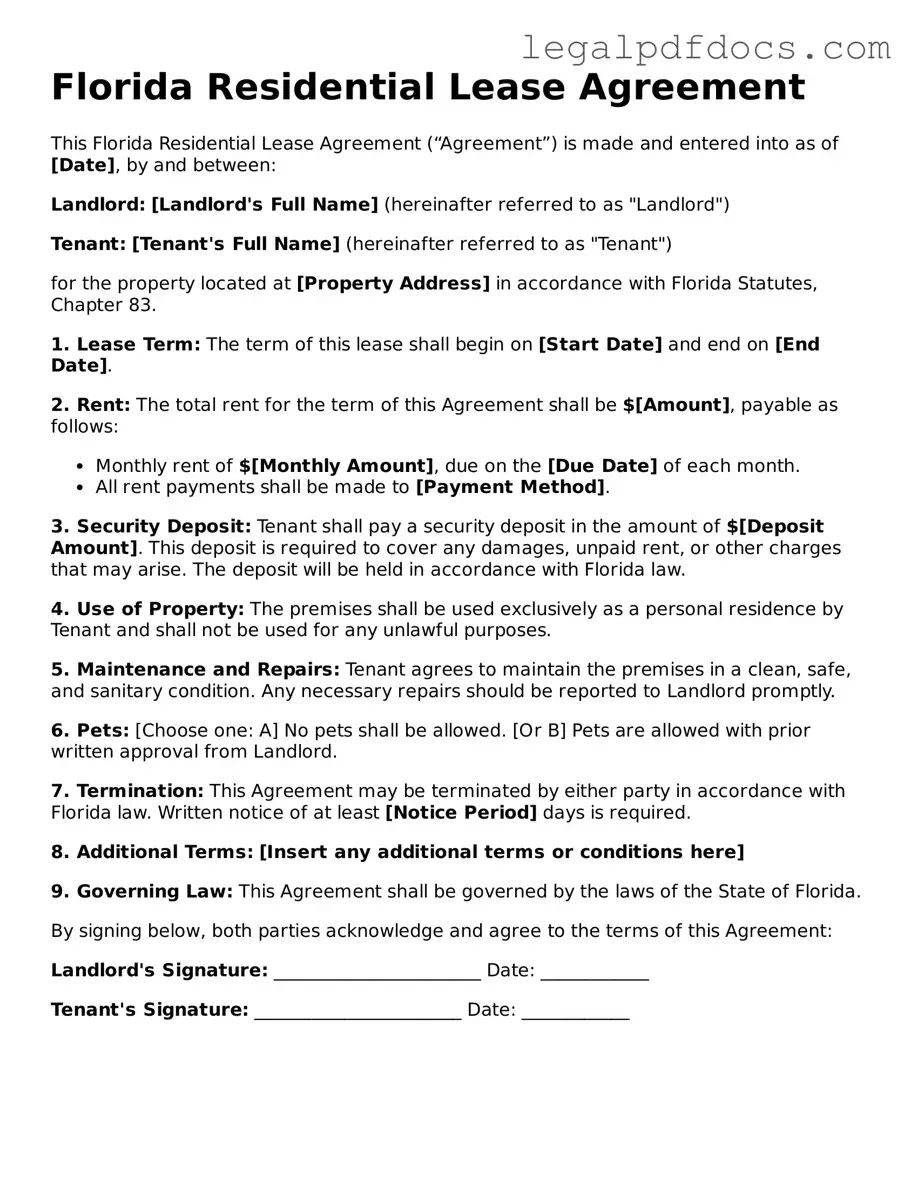Official Residential Lease Agreement Form for Florida
The Florida Residential Lease Agreement is a legal document that outlines the terms and conditions between a landlord and a tenant for renting residential property in Florida. This agreement serves to protect the rights and responsibilities of both parties, ensuring a clear understanding of the rental arrangement. For those looking to create or review this important document, consider filling out the form by clicking the button below.
Open Residential Lease Agreement Editor Here
